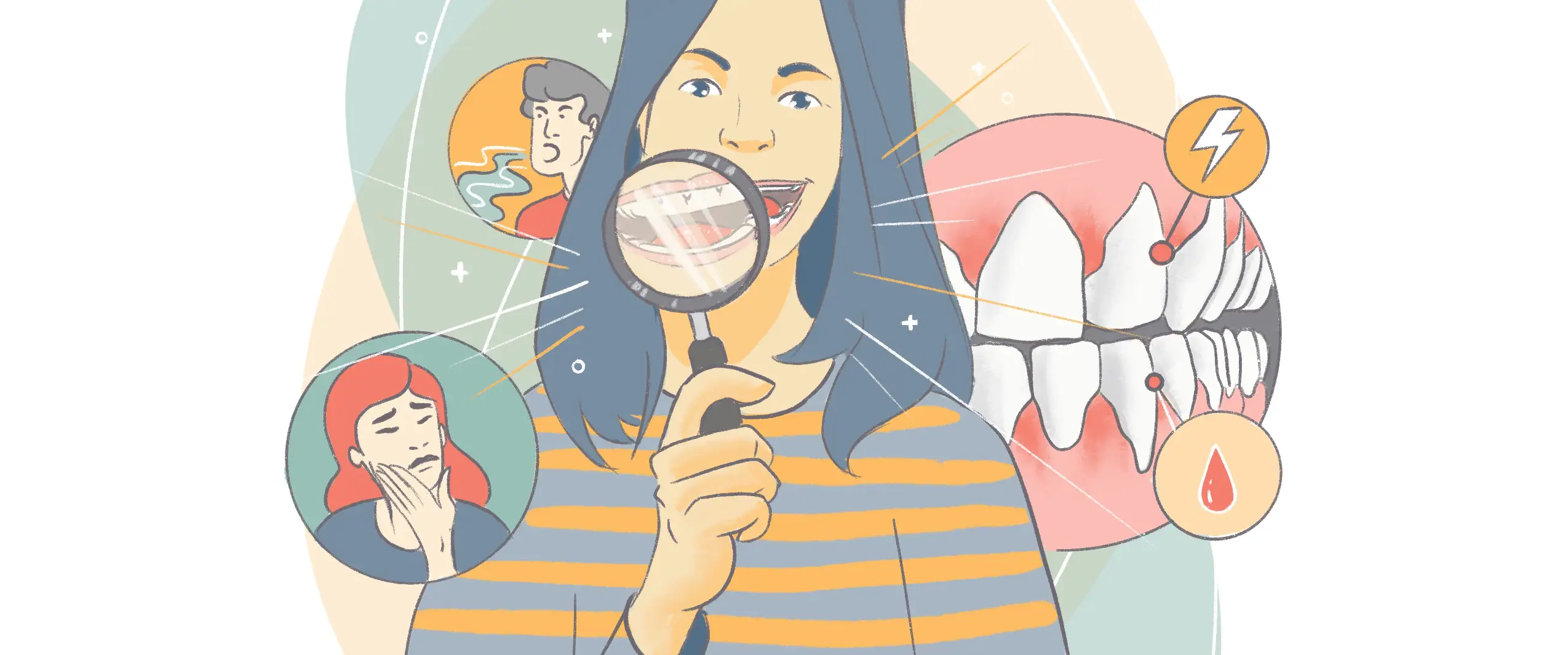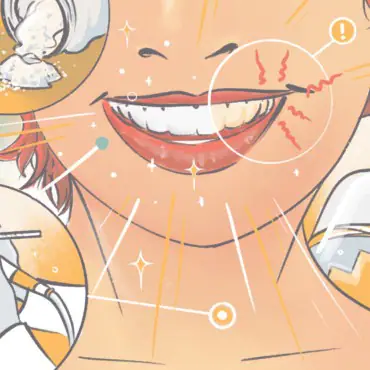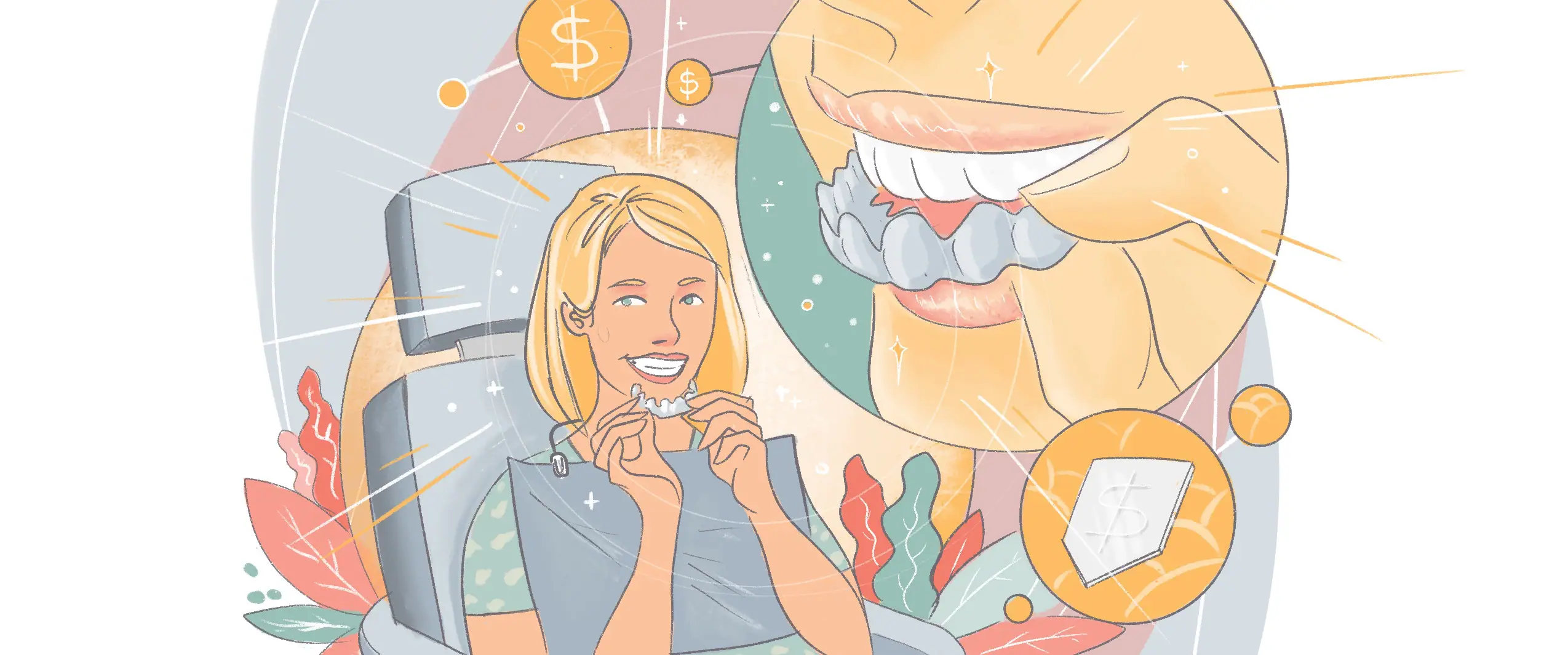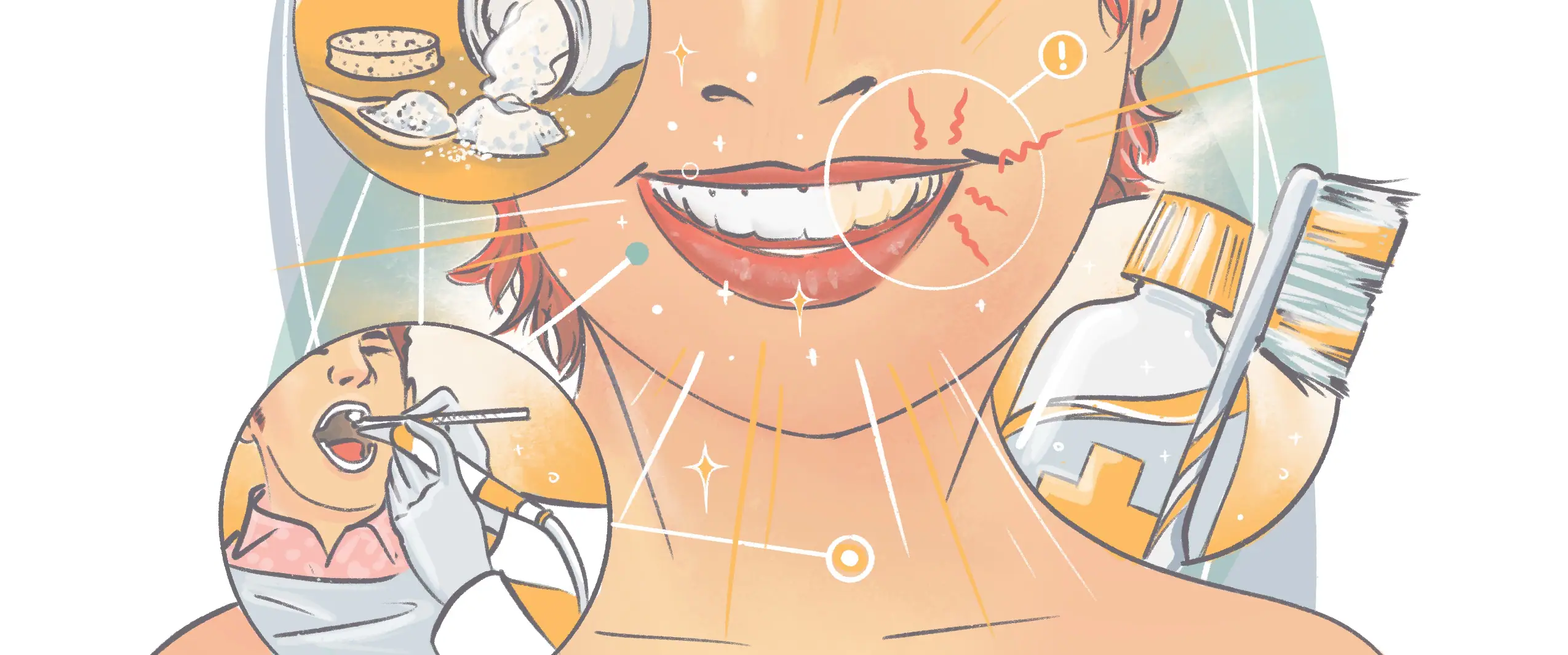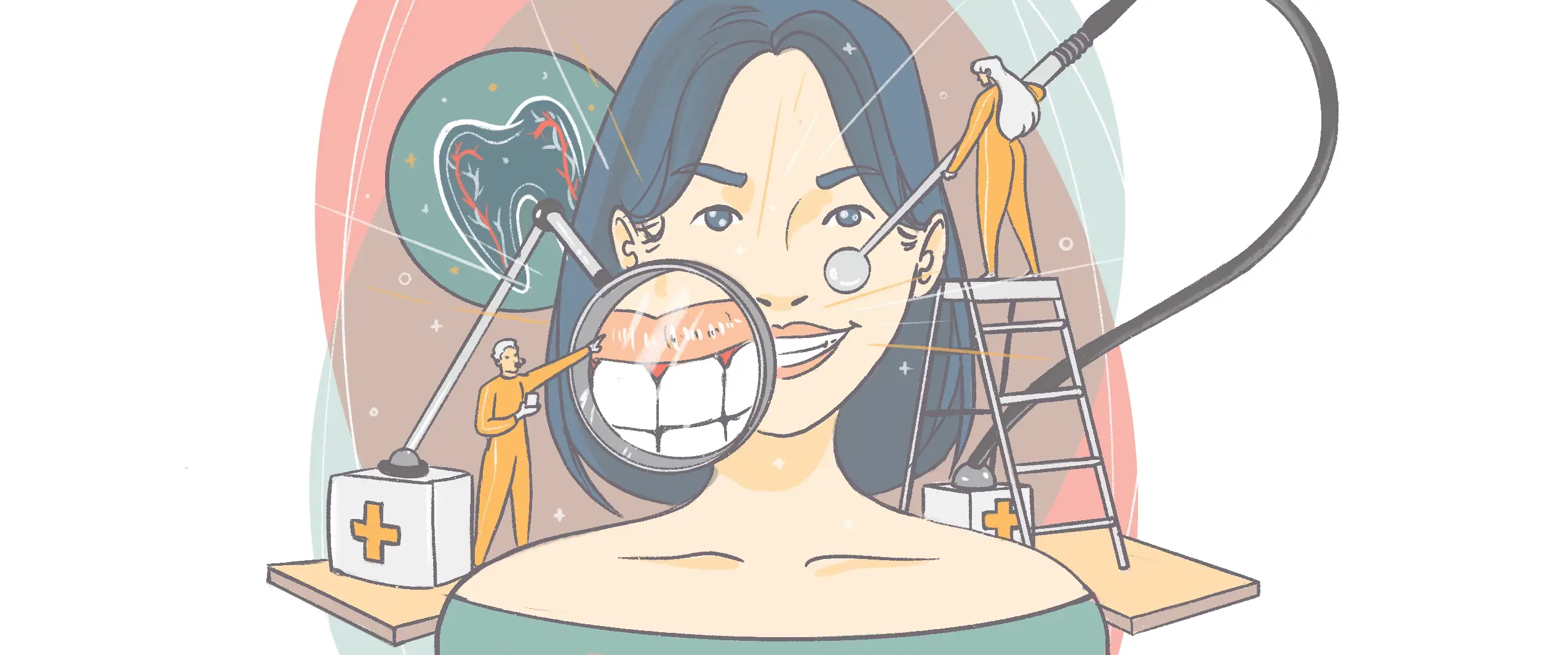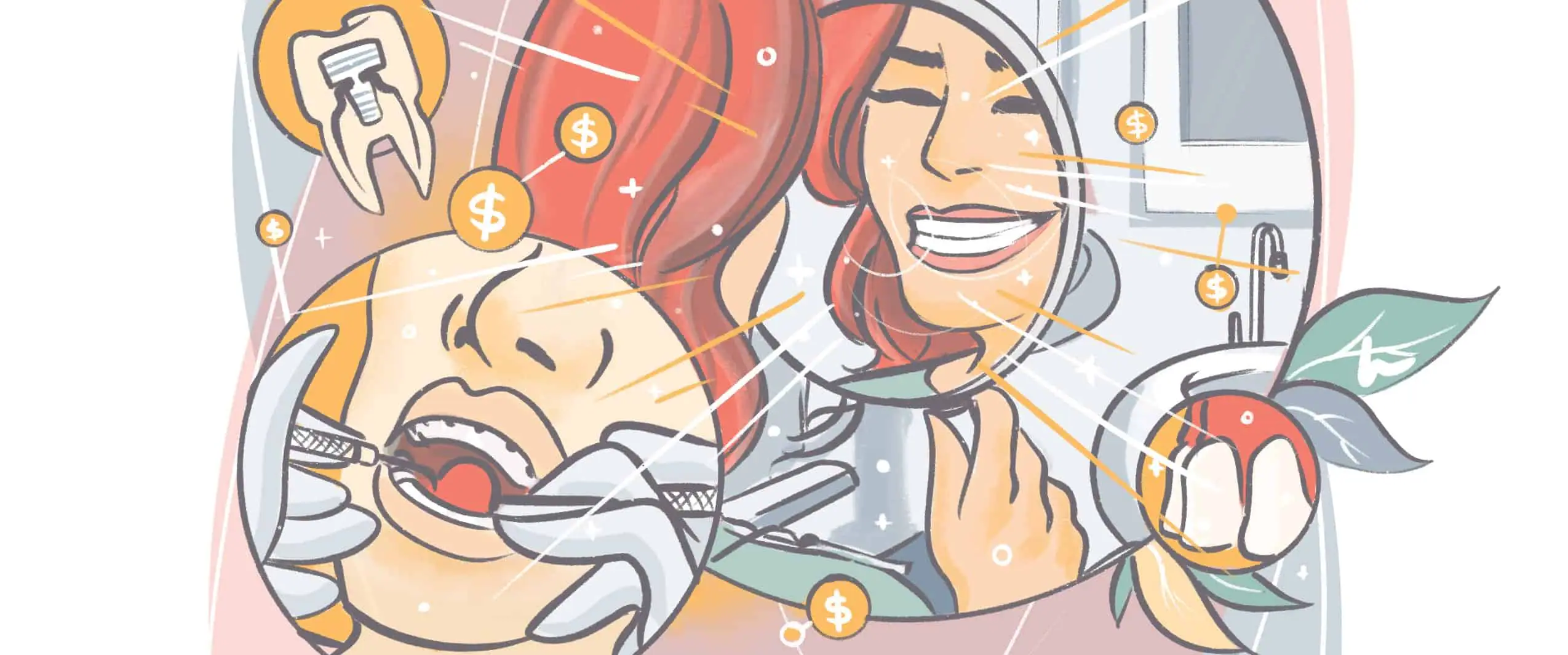Well first of all, receding gums are very common. Either through your oral care routine, genetics, or often just age, receding gums are everywhere. Few people know how to treat them too, so they ignore their symptoms instead of getting proper treatment. And unfortunately, with time, this dental problem will become worse and can impact your oral health.
What are receding gums?
When gum tissue that surrounds your teeth starts to pull back or wear away, you’re experiencing receding gums (or “gingival recession”). When this happens, the roots of your teeth can become exposed, gaps start to form, and bacteria and plaque can start to build up. Worse, if you don’t treat it, the bone structure of your teeth and surrounding tissue become susceptible to damage. In some severe cases, you might even lose a tooth.
What are the symptoms of receding gums?
Most people take a long time to notice the signs of gum disease and gum recession. Often, they remain unaware of the issue until their teeth become extremely sensitive to sugary foods, acidic meals, and hot or cold beverages. The more gums recede or shrink, the easier it is to spot them, and the more you will experience symptoms.
To keep your dental health in check, it’s important to seek treatment as soon as you notice the first sign that something is wrong. Recognizing the symptoms of receding gums can help you spot the problem early. Here are some of the typical signs you should look out for:
- Exposed roots
- Long teeth
- Red or inflamed gums (gingivitis)
- Painful gums
- Soreness
- Tooth sensitivity
- Bad breath
- Pus between the gums or teeth
- Bleeding
The visible changes are easy to locate if you regularly monitor your teeth. Bleeding and pain are often most noticeable after brushing or eating hard foods.
What causes receding gums?
Lots of factors can cause receding gums. If you’re aware of them, you can assess your level of risk. Some of the most common causes are:
- Periodontal disease (periodontitis)
- Harsh brushing
- Poor oral hygiene
- Crooked teeth
- Misaligned bite
- Hormone fluctuations
- Genetics
- Aging
Genes play a key role in receding gums. In fact, 30% of the world population is prone to hereditary gum disease, no matter how hard they try to take good care of their teeth. In cases like these, the gums and tissues are often vulnerable to inflammation, which is the main reason for the recession. If you believe you may be at risk for this problem, find a dentist to consult about your current dental health.
Due for a checkup?
Find a top rated dentist near you that takes your insurance.
Periodontal disease
According to research, periodontal diseases – or gum diseases – affect 20% to 50% of the global population. This disease is a gum infection that slowly destroys the gum tissues. When left untreated, it can affect the bone that supports the teeth and force the roots to lose their grip. This is one of the primary causes of a receding gum line.
Harsh brushing
We always tell you to floss and brush, but if you’re too ruthless, it can cause damage and take a toll on your gum health. When you brush your teeth too harshly, you risk damaging the outer layer of the teeth, the enamel. With time the enamel will start to wear away, which can also result in a receding gum line.
Poor oral hygiene
If you don’t regularly brush and floss your teeth or rinse with an antibacterial mouthwash, you are at risk for constant plaque and tartar buildup. Plus, you are more likely to have tonsil stones trapped from all the mucus, food particles, and bacteria. These stones can cause some serious soreness and swelling.
Hormonal changes
Changes in hormone levels, like from pregnancy, menopause, or puberty, can make the teeth prone to gum recession.
Getting diagnosed
Only a dentist can diagnose receding gums. You’ll need to get a physical examination, which will pinpoint any underlying dental issues. The dentist may also use a probe (small ruler) to measure the length of all the gum pockets. Experts believe healthy gums should have a pocket size between 1mm and 3mm. Anything bigger than that is a clear sign of gum recession.
How are receding gums treated?
There are lots of treatment methods for managing receding gums, and yours will depend on the state of your oral health. Often you can manage receding gums simply with regular dental cleanings. Other times, you may need surgery.
Here is a list of the typical treatments you can expect:
- Dental cleaning
- Deep cleaning
- Antibiotics
- Medications
- Surgery
If you’re suffering from mild gum recession, your dentist will clean the affected areas. This procedure will carefully remove plaque and tartar to help the gums regenerate. It’s a good idea to get your teeth twice a year anyway. This preventive tactic will help stave off the development of further problems.
Deep cleaning, also known as root planing and scaling, is a non-surgical procedure. Here your dentist will give you a local anesthetic and have all the plaque and tartar scraped away. With this procedure, you can have that pesky bacteria removed and get your gums back on track.
If there are any remaining bacteria after the procedure, you might receive some antibiotics to root them out. For a more rigorous treatment, a periodontist can prescribe additional medication like antiseptic chips, enzyme suppressants, or topical antibiotic gels.
But, in case of serious gum recession (extremely deep pockets and bone loss), surgery will be required. That means your bones or gum tissues need a revival, and only a surgical procedure can make that possible.
Gum surgery is designed to restore any of the damaged areas that might have contributed to the receding gum line. With surgery, dentists can work deep in the bone areas that are normally hard to reach and remove the harmful bacteria. It will reduce your risk of developing serious dental problems. And remember, the longer you postpone treatment, the more serious your gum recession will be. So, book a dentist appointment as soon as you notice that you have receding gums.
How to help prevent receding gums
Receding gums can often be prevented – or at least lessened. You can reduce your risk of gum recession by practicing proper dental hygiene, not smoking, using a toothbrush with soft bristles, and brushing with gentle strokes.
Sign up for our newsletter.
Just let us know a bit about yourself.
Another key strategy is regular dental check-ups – especially if your teeth are vulnerable to tartar and plaque buildup.
Can I fix receding gums naturally?
Think about the food you eat and any unhealthy habits you might have. Based on statistics, smoking is a major risk factor for developing periodontal disease and gum recession. It increases the number of pocket depths, affects the bones, and causes significant tooth loss.
According to research, nutrition also plays a fundamental role in gum health. A good diet promotes healthy bone formation, boosts periodontal regeneration, and will help maintain your overall oral health.
But take carbohydrates; if you eat too many, some of the food you eat will get stuck in the oral cavity. If the plaque stays there for a few days, it will mineralize and create calculus. Constant intake of sugar and starchy carbs will also contribute to plaque formation.
Diet plays a huge role in how susceptible you are to cavities, receding gums, and gum disease. If you eat right, you’ll supply the body with a sufficient number of vitamins and minerals that can help keep the gums in tip-top shape.
So, to figure out how to stop receding gums naturally, try to maintain a healthy diet rich in vegetables. And stop smoking.
What’s the best toothpaste for receding gums?
The best toothpastes for receding gums are specifically designed for sensitive teeth and cavity prevention. Look for an anti-cavity toothpaste that can strengthen the enamel, deep clean the pockets, reduce inflammation, and prevent bleeding gums. Options like Parodontax Complete Protection and Colgate Sensitive can help.
Can receding gums grow back?
No, it’s impossible for receding gums to grow back. However you can halt the progression of the problem and get treatment. That way, you avoid landing more serious dental complications.
Where can I find a dentist to treat receding gums?
Contact a high-quality dentist in your local area. If you want to find skilled experts, visit Opencare.com. That way, you can find a dental professional to treat your receding gums in no time. Do keep in mind the sooner you get treatment, the better the results.
For those dealing with mild gum recession, regular check-ups will do a lot of good for your teeth, so invest in dental cleaning as often as possible. Eventually, you’ll achieve those healthy-looking teeth and gums you’ve always wanted.
Due for a checkup?
Find a top rated dentist near you that takes your insurance.

